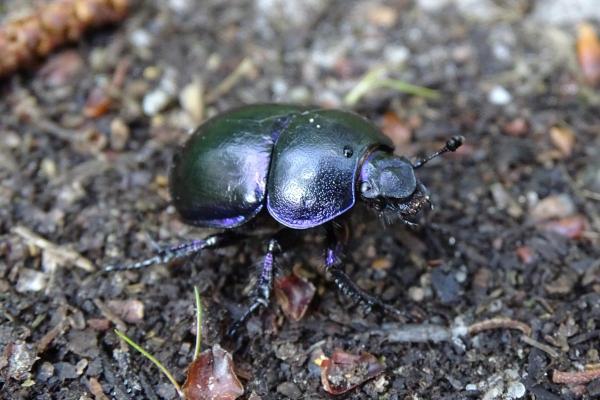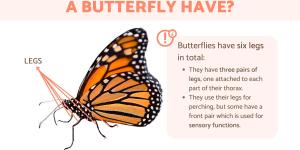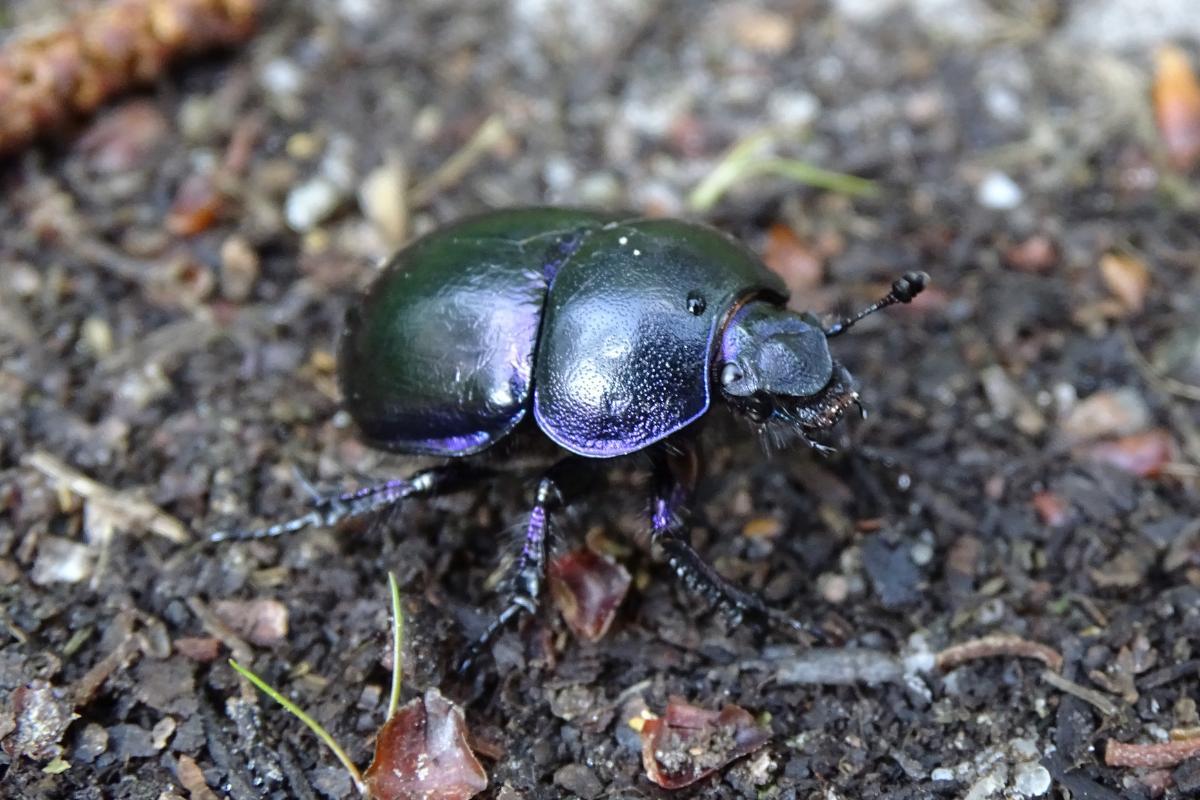How Many Legs Do Beetles Have?


Beetle are insects and have six legs, as do all invertebrates in the class Insecta. Within this class can be found the order Coleoptera, commonly known as beetles. They are the largest order of all insects, being distinguished by a hard wing casing known as an elytron. Various types of beetles are known to inhabit almost every type of habitat in the world. With such a great diversity of species and their varying morphologies, it might be surprising to know just how much they have in common. This includes the beetle leg anatomy which is very similar to those of other insects.
At AnimalWised, we ask how many legs do beetles have? In answering this question, we discover how these basic appendages are supremely well adapted to their environment and ensuring their survival.
How many legs does a beetle have?
As with all insects, beetles have six legs in their adult stage. This can be confusing when we see the larval form of some insects, such as caterpillars of the order Lepidoptera. While caterpillars appear to have many more legs, they have additional prolegs or pseudopods which allow them to move.
The larval form of beetles are known as grubs. Beetle grubs actually have six legs like in their adult stage. They are joined to the thorax and the top of the grub's abdomen. Extending from this is the rest of the abdomen which is much larger and is pulled across surfaces by the legs at the front.
When the beetles develop into their adult form, their legs tend to extend from the thorax alone. Specifically, they are attached to the three segmented parts of the thorax which are the prothorax, mesothorax and metathorax. Each pair of legs is connected to each of these different segments. You can discover more about the body parts of beetles by looking at our full guide to beetle anatomy.
Some beetles have evolved specialized legs for very specific adaptations, such as digging or swimming in water. Others have legs adapted for climbing or jumping. Legs are an essential part of beetle anatomy, contributing significantly to their success in a wide variety of habitats and ecological roles.
Beetle leg anatomy
Beetle legs have various structural adaptations which depend on the specific needs of each species. These are usually adapted to their habitat, whether helping them to catch certain prey or to navigate a specific terrain. There are also certain characteristics which are common to all or most beetle species. We understand what beetle legs are like by looking at the specific parts of beetle leg anatomy:
- Coxa: the coxa is the basal portion and closest to the body of the leg. It is often robust and articulates with the thorax of the beetle. The coxa provides stability and support to the leg.
- Trochanter: this small segment follows the coxa and acts as a joint, allowing some flexibility in the leg. Although relatively small, the trochanter is essential for movement.
- Femur: the femur is the long, robust segment that follows the trochanter. It is crucial for the strength and momentum in the beetle's locomotion. The shape and length of the femur can vary depending on the species.
- Tibia: the tibia is the next segment after the femur and is usually thinner. It may have specialized spines, bristles or protuberances that serve various functions, such as cleaning the body or handling food.
- Tarsus: the tarsus is the distal portion of the leg and is composed of several segments called tarsomeres. The number of tarsomeres can vary between beetle species. At the end of the tarsus are claws and adhesive pads that allow the beetle to cling to surfaces, even being able to hang upside down.
- Nails or claws: some beetles have appendages at the end of their legs which act as nails or claws. They are structures which are also adapted for gripping surfaces and climbing. These are especially important for locomotion and exploration of the environment.
- Adhesive setae: instead of claws, some beetles have sticky pads made from hair-like structures known as setae. These allow beetles to adhere to surfaces, facilitating their ability to walk on different textures.
The detailed morphology of beetle legs can vary greatly between species, reflecting specific adaptations to their particular habitats, behaviors and ways of life. For example, some burrowing beetles may have front legs modified for digging, while aquatic beetles may have legs adapted for swimming.
Learn more about one particular type of beetle with our article on how long do ladybugs live?

Beetle legs uses and functions
The legs of all beetles will serve a purpose, although this can vary according to different species. They are critical for their survival and success as a species in a given environment. We look at some of the main uses and functions of beetle legs below:
- Locomotion: the primary function of beetle legs is locomotion. These structures allow them to move around their environment, whether walking, running, jumping or climbing. The adaptation of legs to different environments varies by species, from legs adapted for digging in underground beetles to legs specialized for swimming in aquatic beetles and other types of aquatic insects.
- Food handling: the legs of beetles are used to manipulate and process food, especially the tibias and tarsi parts. Many beetles are herbivores or detritivores, using their legs to hold, cut or transport plant materials or organic remains. Learn more about detritivores with our article on types of scavenger animals.
- Cleaning and grooming: beetle legs often have bristles and spines that allow them to clean their body. They use these structures to remove dust, foreign particles or food debris that could interfere with their sensory and motor functions.
- Sensory system: the legs of beetles also serve sensory functions. For example, the tarsi may contain sensory hairs that allow them to perceive their surroundings, especially when walking on surfaces. This is crucial to detect the texture of the substrate and the presence of food. They are also important to alert them to danger.
- Digging: in some beetle species, such as rhinoceros beetles (including the genera Dynastes, Oryctes and Chalcosoma, among many others), the front legs are adapted for digging. These beetles can use their robust, specialized front legs to dig holes in the ground where they lay their eggs or forage.
- Social interaction and reproduction: legs may also play a role in social interaction and reproduction. In certain species, the legs can be used in courtship and during copulation. Some beetles even use their limbs to communicate with other individuals of their species.
- Adhesion and grip: the claws and adhesive setae on the legs allow beetles to cling to different surfaces, whether to climb plants, grab prey or avoid falls. This is particularly prominent in beetles of the genus Dytiscidae (commonly known as ‘diving beetles’).
- Thermoregulation: the legs may play a role in the beetle's thermal regulation. By being in direct contact with the substrate, the legs can help control the beetle's body temperature, allowing it to adjust to varying environmental conditions.
- Chemical communication: some beetles use their legs to release pheromones, chemicals that act as communication signals with other individuals of their species. This is especially important in sexual and territorial interaction.
- Defense: the legs can be used in defense against predators. Some beetle species can use strong, spiny legs to defend themselves and deter potential threats.
- Balance and stability: beetle legs also contribute to the beetle's balance and stability as it moves through its environment. Coordination of leg movements is essential to avoid falls and to face different types of terrain.
- Transport of materials: in some species, such as dung beetles that roll balls of dung with their legs, these can also be used to collect other food, transport materials necessary for the construction of nests and for the preparation of breeding sites. Relative to their size, their ability to carry with their legs makes beetles some of the strongest animals in the world.
- Water collection: especially those that live in arid environments, some beetles can use their legs to collect water from ambient humidity or to absorb nutrients from the substrate.
The diversity of functions performed by beetle legs demonstrates their adaptability to a wide variety of environments and lifestyles. The legs are specialized according to the needs of each species, but all are essential for the survival and evolutionary success of beetles in their diverse habitats.
Discover more about how different types of insects can survive their habitats by reading our articles on whether insects have brains or if insects have hearts.
If you want to read similar articles to How Many Legs Do Beetles Have?, we recommend you visit our Facts about the animal kingdom category.
- Bar, M.E. (2010). Order Coleoptera. Biology of Arthropods, 1.
- Leung, B., Bijma, N., Baird, E., Dacke, M., Gorb, S., & Manoonpong, P. (2020). Rules for the leg coordination of dung beetle ball rolling behavior. Scientific Reports, 10(1), 9278.
- Ruppert, E.E., Fox, R.S., & Barnes, R.D. (2005). Zoology of invertebrates: a functional-evolutionary approach (pp. 1045-1045).
- Smolka, J., Baird, E., Byrne, M. J., Jundi, B., Warrant, E. J., & Dacke, M. (2012). Dung beetles use their dung ball as a mobile thermal shelter. Current Biology, 22(20), R863-R864.






